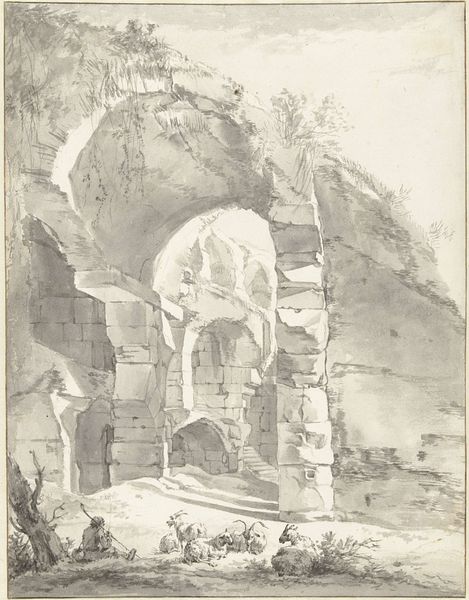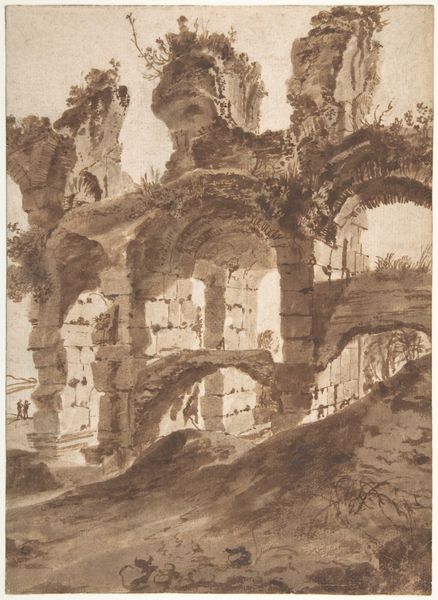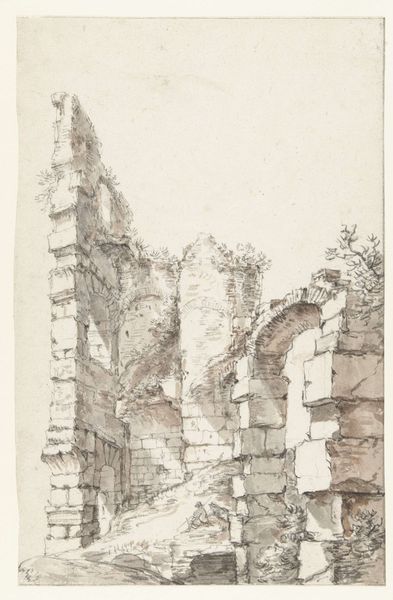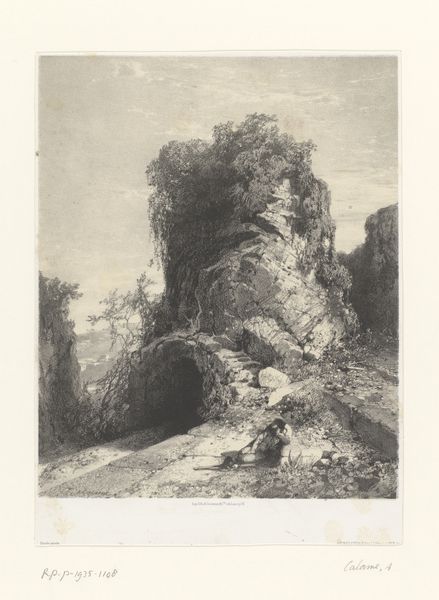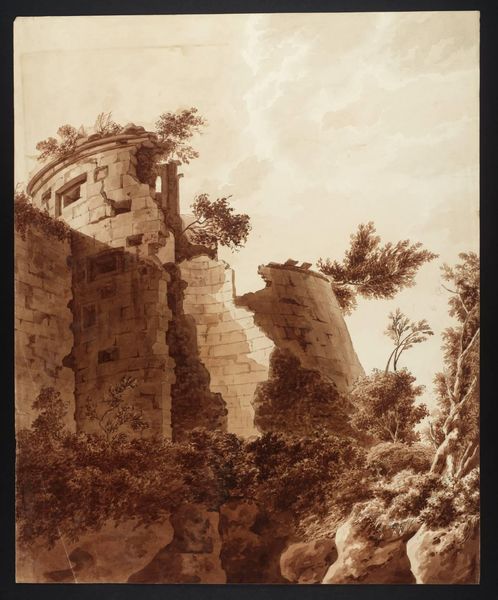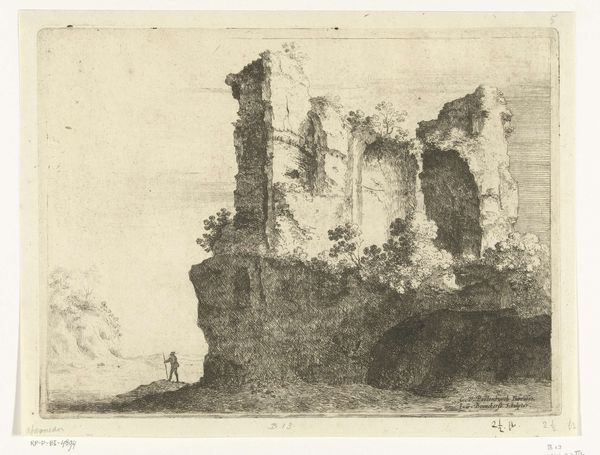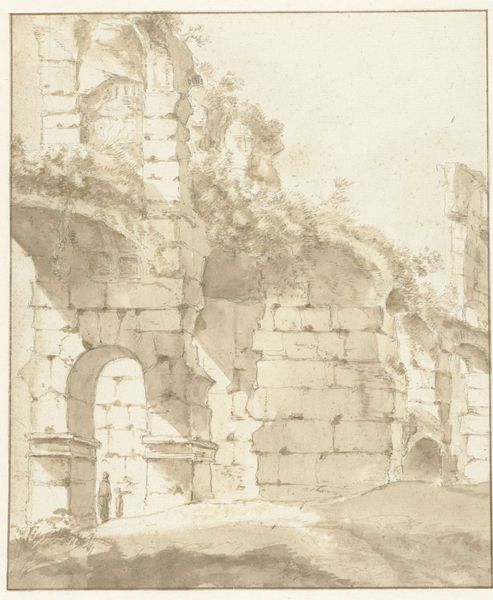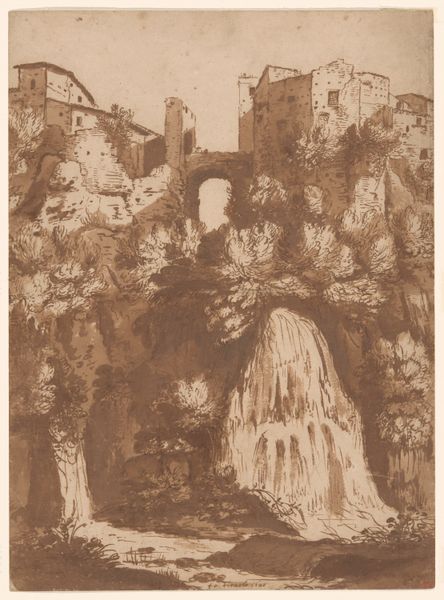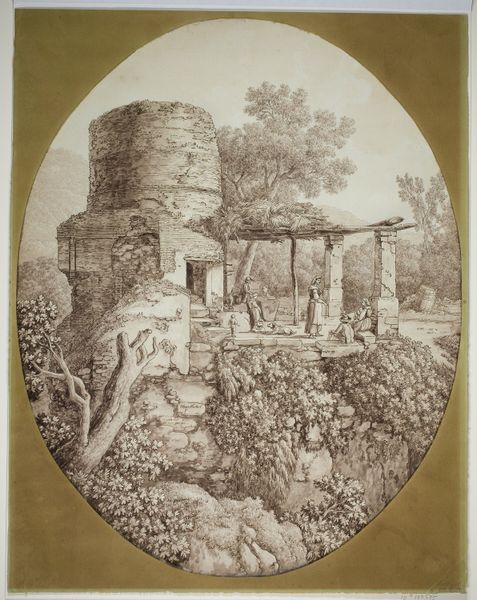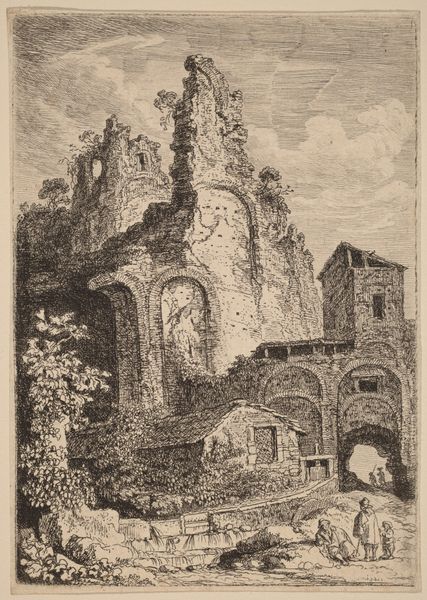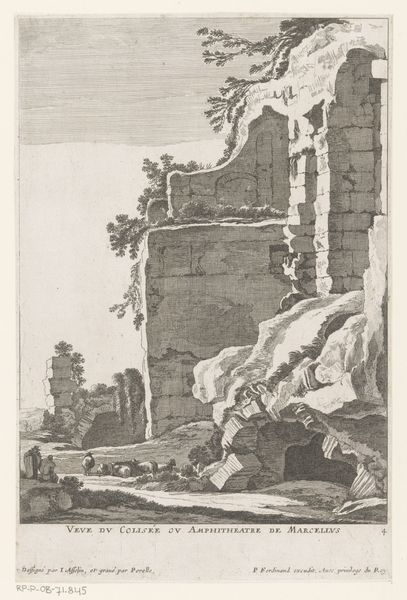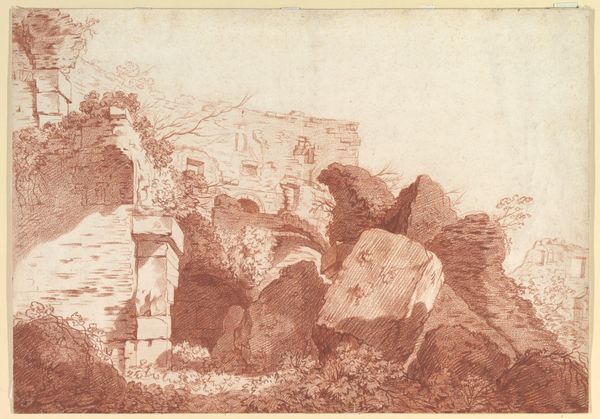
Ruïne van het zogenaamde Palazzo Maggiore op de Palatijn 1622
0:00
0:00
drawing, watercolor
#
drawing
#
landscape
#
romanesque
#
watercolor
#
cityscape
#
history-painting
#
italian-renaissance
Dimensions: height 307 mm, width 220 mm
Copyright: Rijks Museum: Open Domain
Curator: This is Cornelis van Poelenburch's 1622 drawing, "Ruïne van het zoogenaamde Palazzo Maggiore op de Palatijn"—"Ruins of the so-called Palazzo Maggiore on the Palatine," rendered in watercolor. What are your first thoughts? Editor: My first impression is melancholic beauty. The sepia tones evoke a sense of fading grandeur. I imagine time softening these once imposing structures into quiet poetry. Curator: I feel that. The ruined architecture almost sings of stories untold. Van Poelenburch seems captivated by the dialogue between nature and the remnants of human ambition. The creeping vines almost reclaim the stone. Editor: Absolutely, nature is the great leveler here. These ruins—these symbols—they whisper of fallen empires, of shifting power. I can almost see the ghosts of emperors flitting amongst the stones. It really prompts reflections on how hubris and vanity all return to dust in time. Curator: Precisely! The Palatine Hill, after all, was once the very heart of Rome. By depicting its decay, he highlights a universal truth: impermanence. Editor: I’m also intrigued by the drawing technique. There’s a certain lightness to the watercolor that paradoxically accentuates the weight of the history depicted. It’s almost dreamlike. Is there a Renaissance sensibility here, with a sense of perspective and detail, but overlaid by what's now decaying? Curator: The Italian Renaissance strongly influenced Van Poelenburch's work. He captures detail but, yes, romanticizes, giving a slightly soft glow, I feel, to these worn blocks, bringing us back to some glorious if romanticized past, made a bit nostalgic for a future he could only vaguely foresee. Editor: There's such rich symbolism here. I find this resonates even today as nations rise and crumble, and as humans impose structures only to watch them eventually reclaimed. It almost suggests that to look to a deeper history we should perhaps admire what is left. Curator: A compelling reminder that, ultimately, everything transforms, everything yields. A perfect summation to ponder. Editor: Nicely said. It definitely compels reflection on cyclical history—civilizations rising and falling, all returning to dust. It makes one humble, doesn’t it?
Comments
No comments
Be the first to comment and join the conversation on the ultimate creative platform.
